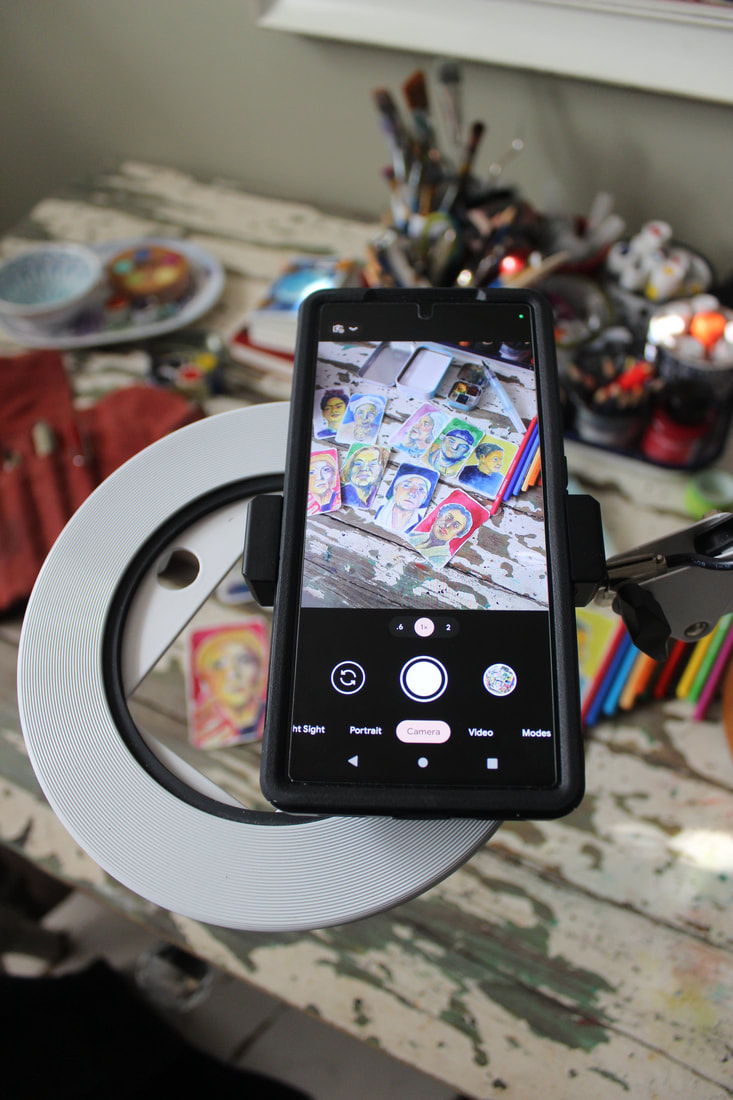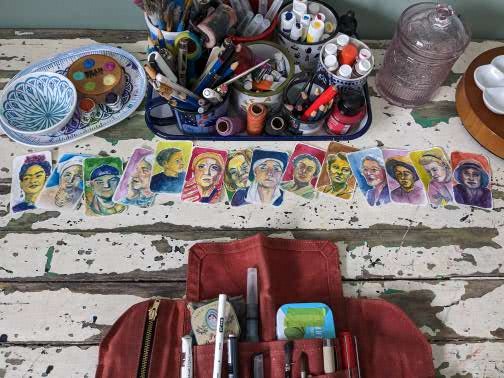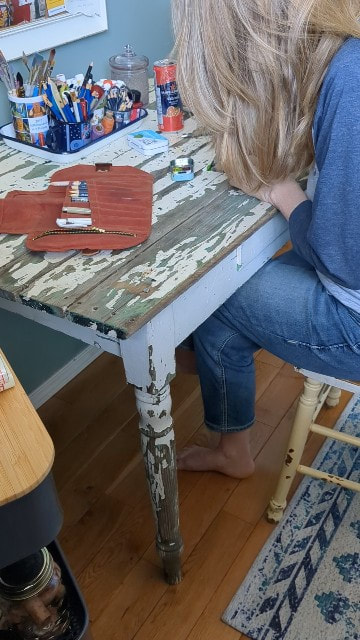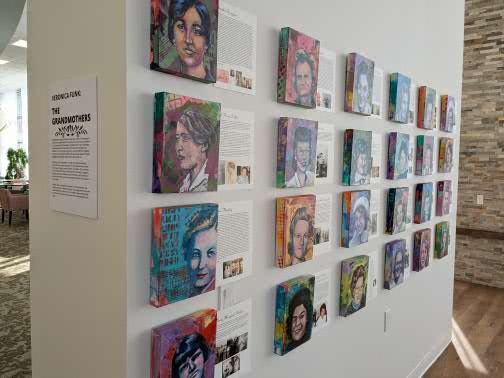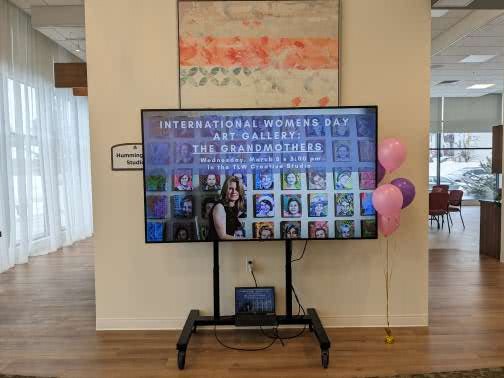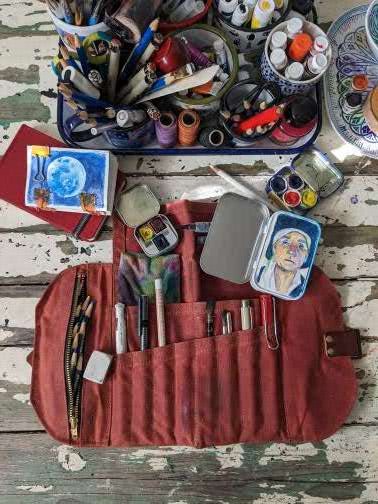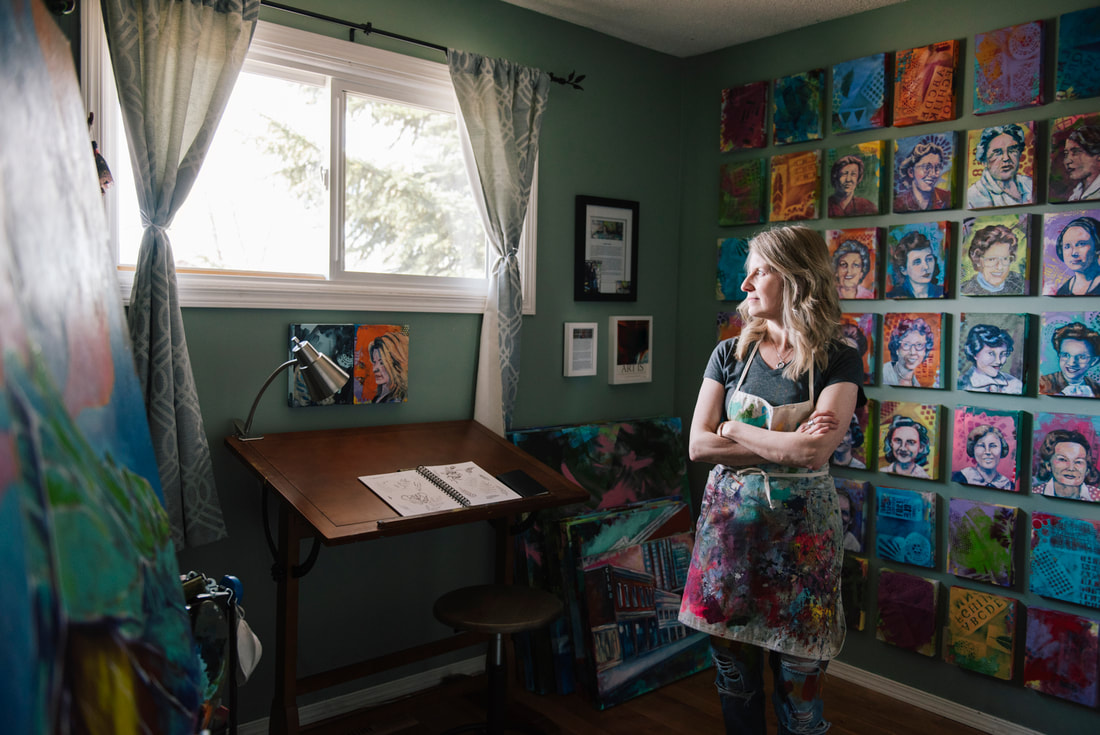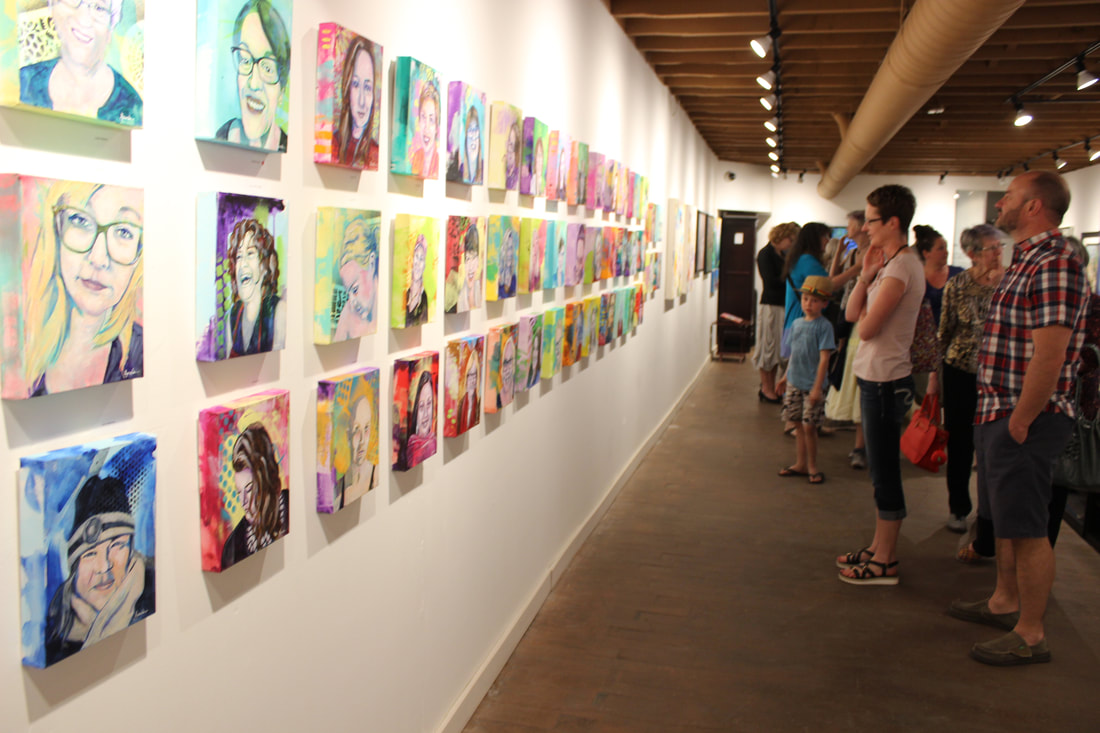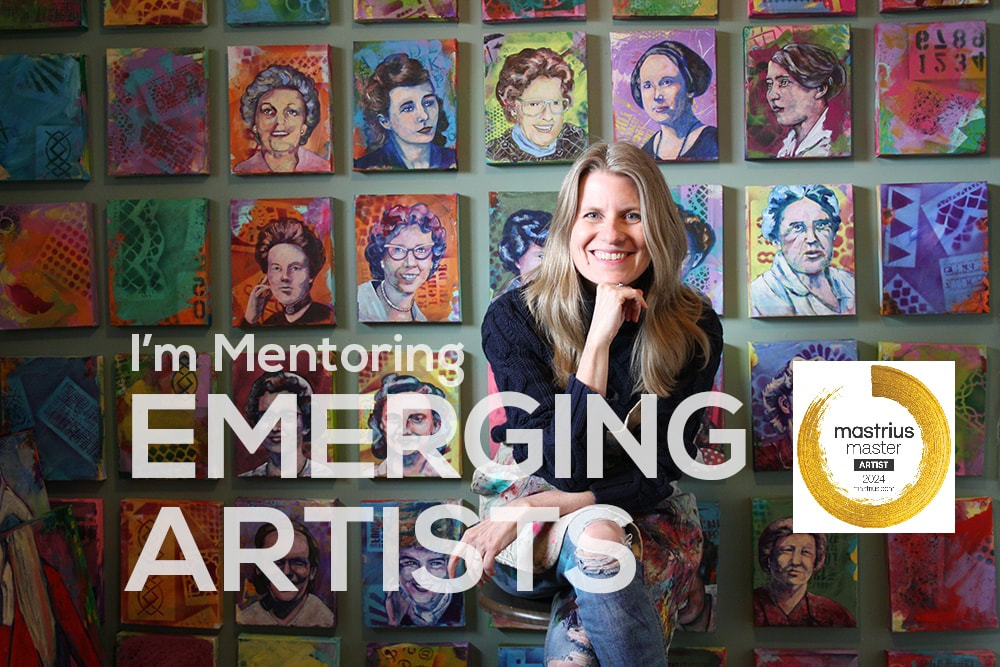|
Press Release:
Writing an article for publication is similar to writing a bio & statement, 1 page with a different layout: • FOR IMMEDIATE RELEASE should be top and centre • Write in 3rd person, full name followed by pronouns or last name • - end - or - 30 - is centered at the end of your article, following a short mini bio • CONTACT INFORMATION should be on the bottom and includes: • Your name • Telephone number • Email address • Website • Social media links Tips: • When publishers have space and a short deadline, sometimes articles are published ‘As Is’ so grammar, language usage and links should be well checked prior to submission. • Have photographs ready to submit…with you working, of the work itself, with you holding the work or with it behind you on a wall or easel. • Publisher’s websites, magazines, etc will usually have submission and contact information guidelines. • Keep working MS Word documents but also save as a PDF I'll be teaching three in-person workshops this June...and maybe even three. The first will be at the Airdrie Public Library and will be an introduction to watercolours with a focus on a minimal palette. The second will be at Sparrow Artspace and will be on travel journalling. The third will be on an introduction to portraiture in watercolour. As I've been going through the work I've completed in watercolour this past year, I'm actually quite amazed. It's incredible how much can be accomplished in tiny increments.
A couple of years ago I received this daylight lamp for my studio as a gift and, though I've always used and loved it, I am finally using it to take photos and videos. The lamp is fantastic as it can be set brighter or darker using cool or warm light and the height of it is easily adjusted. I usually have it on the wooden (heavy & sturdy) base but it also comes with a clamp that I've attached to my drafting table so that I can easily move it from one work surface to another. It's really come in handy while I've been working on this year's #the100dayproject which is coming along nicely. The project's been especially fun as I'm not at all concerned about any kind of likeness...I love pushing the 'wonkiness' which is what I've always enjoyed in my work.
Since I've been extremely busy for the past two years, I am currently on sabbatical from regular teaching and university courses. I also thought I'd take a break from working on a project but, really who am I kidding? I love projects. And this 100 Day Project is absolutely no pressure as all 100 portraits fit into two mint tins and there is no pressure to exhibit them at all..though that may change. When I think back over the past year, I cannot believe that I've had 3 solo exhibits & numerous group exhibits, have travelled from British Columbia to Nova Scotia and to San Francisco and completed two more university classes. Plus, I've been painting, teaching & mentoring a lot. It's been really nice just to paint for now though I will most likely teach a couple of smaller workshops this summer (2-3 hours long). I've been enjoying my switch to watercolour so much with all of the travel journalling and now this mini-portrait project that I want to share what I've learned as well as my materials with others. It's been so nice to create this mini body of work with such a limited amount of supplies.
I've moved my studio back upstairs for awhile as my youngest daughter will be returning for the summer, the first in 4 years. She'll be moving away in autumn as she'll be pursuing her Masters' Degree in History next year so coming home now makes sense. I never mind making these adjustments for our daughters as I love the times they were home and though I miss them terribly when they're gone, I know it's so good for them to pursue the things they love, too. This room is quite nice, too, as the light is much better. Before I move back down in fall, my husband has offered to remove the shrub outside the window for more light and to have a new window installed, which will be very good. I actually like little changes once in awhile.
I had such a lovely time at 'The Grandmothers' exhibit reception at Trico LivingWell and am happy that the last of the grandmothers will be exhibited here for a while. It was so nice to enjoy wine & chocolates and speak to the residents who shared their stories with me, too. I'm also looking forward to going back for a closing reception as well.
I've been enjoying this year's 100 Day Project immensely...which is interesting as the first (and only) time I took part I was so stressed. Mind you, I was painting 100 portraits of women I knew for the 'Nasty Women' project and I put a lot of pressure on myself. This time I've decided to really embrace the wonky portraits that I have really been enjoying. Plus, it has been lovely to experiment and play with watercolour in such a small way as each portrait is painted on 2x3.5 inch watercolour papers that I cut to accommodate a mint tin which fits into my travel kit very well. I also decided to use a limited palette (Joan of Art primary colours), a water brush, mechanical pencil, erasor & uniball signo white pen (when I need to re-introduce highlights). Having such a small art kit ensures that I can paint anywhere anytime which certainly helps to keep me motivated. I've put aside my mini sketchbook for now (made using directions by Peg & Awl who also made my Sendak Mini Artist's Roll) but I am looking forward to filling it this summer. I'm also glad that I've focused on historical women artists with this project as it's been so nice to learn more about them after seeing their work at the Vancouver Art Gallery, Winnipeg Art Gallery, Walker Art Centre in Minneapolis, San Francisco Museum of Modern Art and Glenbow Museum in Calgary. I still can't believe we aren't taught about these women who were just as prolific and successful as the men in their time, even in current art history courses. And seeing my little Georgia O'Keeffe portrait in this photo makes me extremely happy. :)
“Pay attention to what draws your attention.” ~ Margaret Vanderhaeghe What constitutes a body of work or series?
•Same subject matter & medium •Same subject matter, different medium •Same media, different subject matter •Same size •20-25 larger or 50-75 smaller pieces I’ve done all of the above but since moving to smaller works because of adhesive capsulitis in my shoulders, I tend to prefer a series with the same subject matter, same media & same size. Consider WHAT, HOW, WHEN & WHERE you like to create your work: 1.WHAT: What draws your attention? 2.HOW: Which tools (brushes, easels, etc), materials (paint, pencils, media, etc) and substrate (including size) keep you inspired? 3.WHEN: Is there a time of day that you are most motivated to create? 4.WHERE: Do you have a designated studio/space to create? Or a cart of supplies ready? A bag or pochade box prepared to paint en plein air? When you create work that resonates with you, it will also resonate with others. Now you need to find your audience.
Are there places or groups that you connect with? There may be an opportunity to exhibit with them as well. If you are interested in specific galleries or markets, check their information online as they may have specific calls for artists. If there is a cafe, restaurant, health care facility, etc that appeals to you, approach them to discuss an opportunity for a partnership. Or set up an online shop. When you keep researching and keep your eyes & ears open, you will notice many opportunities. Once you have work ready it can be surprising at how often opportunities begin to present themselves. What works well for someone else may or may not be the right thing for you. Over time I have learned to trust & follow my own instincts. Just be aware of scams that target artists...both for exhibition & publication. There should not be huge fees attached. One of the things I always hear about my 'True North Tarot' deck is that people love having a collection of my work in a small deck. It can be viewed and/or purchased online here.
French & Italian TarotThe ancestors of what we today know as Tarot cards can be traced back to around the late fourteenth century. Artists in Europe created the first playing cards, which were used for games, and featured four different suits. These suits were similar to what we still use today – staves or wands, discs or coins, cups, and swords. After a decade or two of using these, in the mid-1400s, Italian artists began painting additional cards, heavily illustrated, to add into the existing suits. These trump, or triumph, cards were often painted for wealthy families. Members of the nobility would commission artists to create for them their own set of cards, featuring family members and friends as the triumph cards. A number of sets, some of which still exist today, were created for the Visconti family of Milan, which counted several dukes and barons among its numbers. Because not everyone could afford to hire a painter to create a set of cards for them, for a few centuries, customized cards were something only a privileged few could own. It wasn’t until the printing press came along that playing card decks could be mass-produced for the average game-player. Tarot as DivinationIn both France and Italy, the original purpose of Tarot was as a parlor game, not as a divinatory tool. It appears that divination with playing cards started to become popular in the late sixteenth and early seventeenth century, although at that time, it was far more simple than the way we use Tarot today. By the eighteenth century, however, people were beginning to assign specific meanings to each card, and even offer suggestions as to how they could be laid out for divinatory purposes. Tarot and the KabbalahIn 1781, a French Freemason (and former Protestant minister) named Antoine Court de Gebelin published a complex analysis of the Tarot, in which he revealed that the symbolism in the Tarot was in fact derived from the esoteric secrets of Egyptian priests. De Gebelin went on to explain that this ancient occult knowledge had been carried to Rome and revealed to the Catholic Church and the popes, who desperately wanted to keep this arcane knowledge secret. In his essay, the chapter on Tarot meanings explains the detailed symbolism of Tarot artwork and connects it to the legends of Isis, Osiris and other Egyptian gods. The biggest problem with de Gebelin’s work is that there was really no historical evidence to support it. However, that didn’t stop wealthy Europeans from jumping onto the esoteric knowledge bandwagon, and by the early nineteenth century, playing card decks like the Marseille Tarot were being produced with artwork specifically based on deGebelin’s analysis. As occult interest in the Tarot expanded, it became more associated with the Kabbalah and the secrets of hermetic mysticism. By the end of the Victorian era, occultism and spiritualism had become popular pastimes for bored upper class families. It wasn’t uncommon to attend a house party and find a séance taking place, or someone reading palms or tea leaves in the corner. (learningreligions.com) |
|


